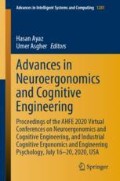Abstract
Recent research shows that robotic therapies are effective for improving core autism impairments. This paper focuses on analyzing the effect of active versus passive robotic interaction on joint attention of children with Autism Spectrum Disorder (ASD). In both types of interaction, robot records data related to joint attention (JA) of children, however, the action taken is different for both the interactions. In active interaction, robot’s interaction is coupled with JA whereas in passive interaction there is no coupling of JA. The experiment was conducted on 12 ASD children including 10 males and 2 females. Each child was introduced to 16 interactions per trial. Each trial comprised of 8 pairs of active and passive interactions each. The frequency of trials was once per week. Results show that children focus more in active robotic interactions with an average accuracy of 68% whereas for the passive interactions the average accuracy is 61%. The results show the significance of active interaction in robotic interventions for ASD children.
Access this chapter
Tax calculation will be finalised at checkout
Purchases are for personal use only
References
Bölte, S., Bartl-Pokorny, K.D., Jonsson, U., Berggren, S., Zhang, D., Kostrzewa, E., Falck-Ytter, T., Einspieler, C., Pokorny, F.B., Jones, E.J.H., et al.: How can clinicians detect and treat autism early? methodological trends of technology use in research. Acta Paediatr. 105, 137–144 (2016)
Dickstein-Fischer, L.A., Crone-Todd, D.E., Chapman, I.M., Fathima, A.T., Fischer, G.S.: Socially assistive robots: current status and future prospects for autism interventions. Innov. Entrep. Heal. 5, 15 (2018)
Cabibihan, J.-J., Javed, H., Aldosari, M., Frazier, T., Elbashir, H.: Sensing technologies for autism spectrum disorder screening and intervention. Sensors 17, 46 (2017)
Scassellati, B., Admoni, H., Mataric, M.J.: Robots for use in autism research. Annu. Rev. Biomed. Eng. 14, 275–294 (2012)
Robins, B., Dautenhahn, K., Dubowski, J.: Does appearance matter in the interaction of children with autism with a humanoid robot? Interact. Stud. 7, 479–512 (2006). https://doi.org/10.1075/is.7.3.16rob
Gernsbacher, M.A., Stevenson, J.L., Khandakar, S., Goldsmith, H.H.: Why does joint attention look atypical in autism? Child. Dev. Perspect. 2, 38–45 (2008)
Murza, K.A., Schwartz, J.B., Hahs-Vaughn, D.L., Nye, C.: Joint attention interventions for children with autism spectrum disorder: a systematic review and meta-analysis. Int. J. Lang. Commun. Disord. 51, 236–251 (2016)
Ali, S., Mehmood, F., Dancey, D., Ayaz, Y., Khan, M.J., Naseer, N., Amadeu, R.D.C., Sadia, H., Nawaz, R.: An adaptive multi-robot therapy for improving joint attention and imitation of ASD children. IEEE Access. 7, 81808–81825 (2019)
Ali, S., Mehmood, F., Ayaz, Y., Asgher, U., Khan, M.J.: Effect of different visual stimuli on joint attention of ASD children using NAO robot. In: International Conference on Applied Human Factors and Ergonomics, pp. 490–499 (2019)
Mehmood, F., Ayaz, Y., Ali, S., de Cassia Amadeu, R., Sadia, H.: Dominance in visual space of ASD children using multi-robot joint attention integrated distributed imitation system. IEEE Access (2019)
Gangi, D.N., Ibañez, L.V., Messinger, D.S.: Joint attention initiation with and without positive affect: Risk group differences and associations with ASD symptoms. J. Autism Dev. Disord. 44, 1414–1424 (2014)
Swanson, M.R., Siller, M.: Patterns of gaze behavior during an eye-tracking measure of joint attention in typically developing children and children with autism spectrum disorder. Res. Autism Spectr. Disord. 7, 1087–1096 (2013)
Dawson, G., Adams, A.: Imitation and social responsiveness in autistic children. J. Abnorm. Child Psychol. 12, 209–226 (1984)
Loveland, K.A., Landry, S.H.: Joint attention and language in autism and developmental language delay. J. Autism Dev. Disord. 16, 335–349 (1986)
Rocha, M.L., Schreibman, L., Stahmer, A.C.: Effectiveness of training parents to teach joint attention in children with autism. J. Early Interv. 29, 154–172 (2007)
Whalen, C., Schreibman, L.: Joint attention training for children with autism using behavior modification procedures. J. Child Psychol. Psychiatry 44, 456–468 (2003)
Acknowledgement
We would like to acknowledgement the RISE lab of SMME-NUST and Autism Resource Center (ARC) for their support and resources during the research.
Author information
Authors and Affiliations
Corresponding author
Editor information
Editors and Affiliations
Rights and permissions
Copyright information
© 2021 The Editor(s) (if applicable) and The Author(s), under exclusive license to Springer Nature Switzerland AG
About this paper
Cite this paper
Mehmood, F., Ali, S., Ayaz, Y., Khan, M.J., Asgher, U. (2021). Comparing Effect of Active vs. Passive Robotic Interaction on Joint Attention of Children with ASD. In: Ayaz, H., Asgher, U. (eds) Advances in Neuroergonomics and Cognitive Engineering. AHFE 2020. Advances in Intelligent Systems and Computing, vol 1201. Springer, Cham. https://doi.org/10.1007/978-3-030-51041-1_40
Download citation
DOI: https://doi.org/10.1007/978-3-030-51041-1_40
Published:
Publisher Name: Springer, Cham
Print ISBN: 978-3-030-51040-4
Online ISBN: 978-3-030-51041-1
eBook Packages: Intelligent Technologies and RoboticsIntelligent Technologies and Robotics (R0)

